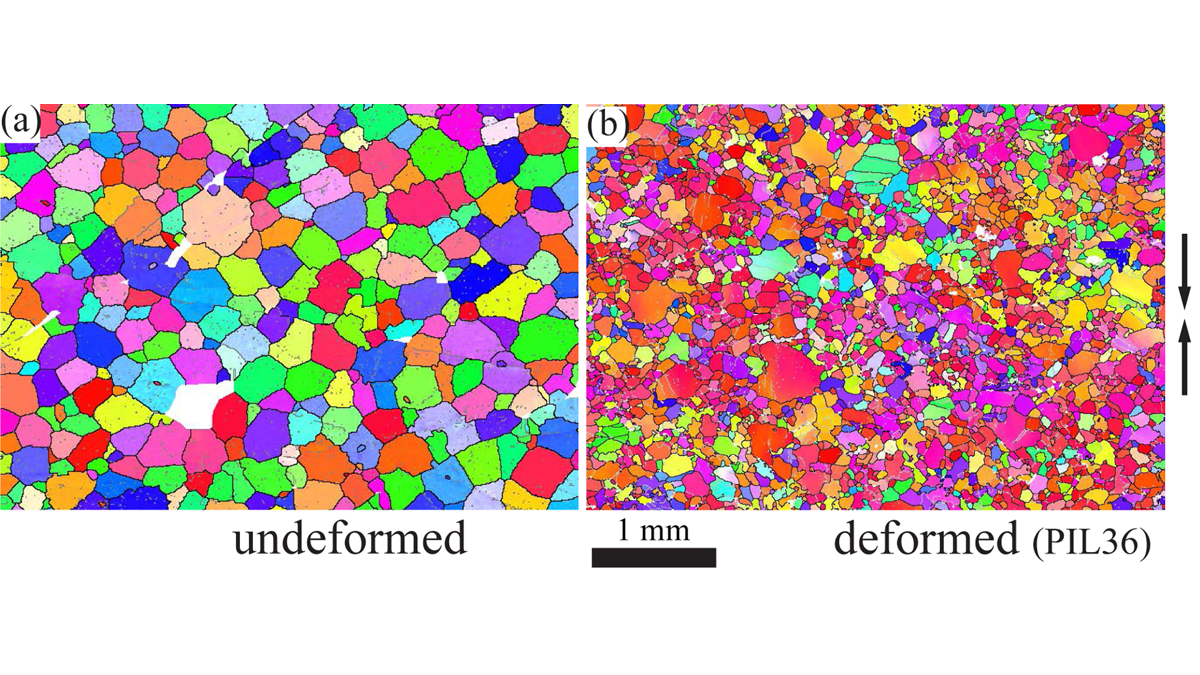Editors’ Highlights are summaries of recent papers by AGU’s journal editors.
Source: Journal of Geophysical Research: Solid Earth
Understanding the factors controlling the movements and deformation of glaciers and ice sheets is key to predicting their stability. Having information about the rates at which their main component, ice, deforms when exposed to stress is necessary to fully appreciate their time dependent deformation.
Qi and Goldsby [2021] describe a suite of new laboratory experiments on carefully prepared samples of pure ice at conditions expected at depth within thick and cold glaciers. They squeezed their samples in one direction at a rate that shortened them by about 0.001 per cent every second. The samples at first deform stiffly until a peak applied stress is reached whereupon the samples appear to flow much more easily. This change in behavior also appears correlate well with evolution of the grain sizes from initially large to significantly smaller in the post-peak stress regime, which suggests a change in the underlying mechanism of the deformation from one controlled by defect diffusion to one enhanced by grain boundary sliding. A more quantitative description suggests that the deformation rate depends on the stress to a power of 3.9, a value larger than normally encountered in other materials. This suggests that ice may deform more rapidly than previously expected, and the results provide important new constraints in the modelling of ice flow.
Citation: Qi, C., & Goldsby, D. L. [2021]. An experimental investigation of the effect of grain size on “dislocation creep” of ice. Journal of Geophysical Research: Solid Earth, 126, e2021JB021824. https://doi.org/10.1029/2021JB021824
—Nikolai Bagdassarov, Associate Editor, JGR: Solid Earth; and Douglas R. Schmitt, Editor, JGR: Solid Earth

